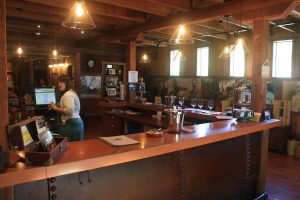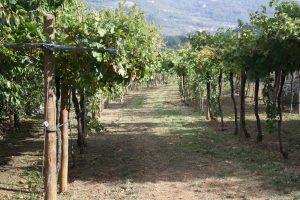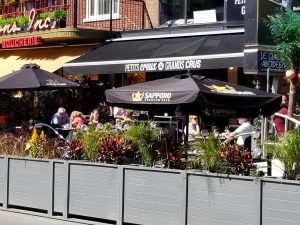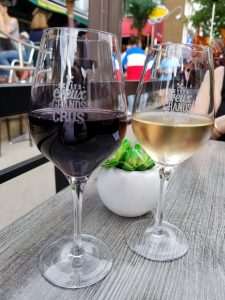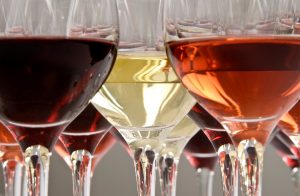Some people are really crazy about Pinot Noirs from the Russian River Valley. To be honest, there are some we like but overall we prefer Carneros, Santa Lucia Highlands and the Santa Rita Hills for American Pinot Noirs. All the same, a wine tasting trip to Sonoma County would be incomplete without visiting the Russian River AVA. Unless the eponymous river is raging in the spring, this sector has a gentle beauty as compared, say, with the majestic mountains of Alexander Valley nearby.
When you make that trip, make sure that you leave time to visit Martinelli (http://www.martinelliwinery.com/). It will be either the first or the last winery you come to off of Route 101, Sonoma County’s main highway, depending on where you start. It’s an easy place to spot along River Road; it’s a big red barn. And that barn says a lot about who and what Martinelli is. Too much of NapaNoma wine making has become the province of big corporations. A winery that has been in the same California family for well over 125 years gives you a reason to visit all by itself. A big red barn is emblematic of a family of farmers and it is the antithesis of what have become known as Napa Palaces.
Martinelli’s big red barn
The tasting room inside is cool, dark and full of history, much of it that of the Martinelli family. The sides of the bar are made from metal panels taken from an old locomotive. The bar itself is under wooden beams, reinforcing the fact that you’re in a barn. For those who like to shop, there is ample opportunity in the tasting room, a bit too much for our tastes. The Martinelli sign advertising the winery also mentions its gift shop, which is unusual. But all the knick-knacks don’t detract from the wine and wow, is there ever a lot of great wine to try.
The Martinelli tasting room
Essentially, Martinelli produces Pinot Noir, Zinfandel, Syrah and Chardonnay. Tastes differ of course, but it is fair to say that all of their wines are of a high quality. They grow grapes in nineteen vineyards, primarily in the Russian River Valley, of which they sell 90% of their grapes to other wineries. So what you get to sip out of a Martinelli bottle is what they consider to be their best.
To get some idea of the variety of wines available in their tasting room, a quick perusal of current releases listed on their web site shows 24 wines. We have found it worthwhile to focus on just one grape on each visit, to be able to sample the subtle differences in terroir that these wines represent. That list of current releases shows nine different Pinot Noirs and seven Zins. The demands of sobriety call for some degree of specialization on a visit.
The Martinelli family is rightly proud of their heritage and there are many stories they like to tell to elaborate on it. One favorite is the name of one of their oldest, most famous vineyards. It is on a very rocky, steep (60 degree) hillside. The founder’s son was told that only a jackass would try to grow anything on that hill. And so today, Jackass Hill produces some of Martinelli’s best loved Zinfandels.
A wine tasting visit to Martinelli will combine history and great wines. Why would anyone want to miss that?

